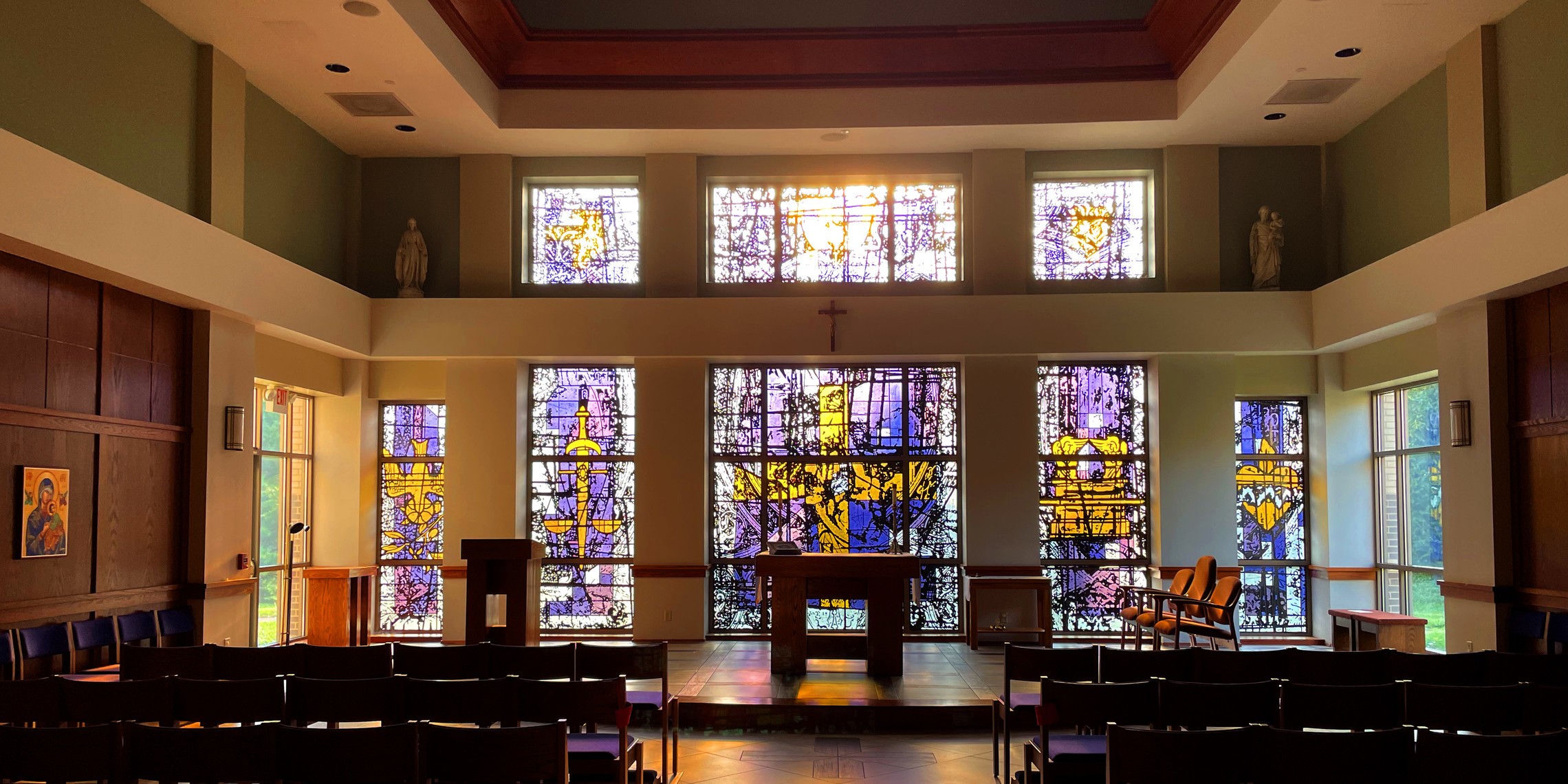October 01, 2023

Family prayer is at the heart of growing a fruitful and healthy domestic Church. But it can often be difficult to prioritize or even to pray as a family. When you do, where is the best place? This is an important decision. First it is helpful to consider the nature of space and how it helps us to pray. For example the bedroom is situated away from the bustle of daily life to promote uninterrupted rest. On the other hand the family room is the most accessible with plenty of furniture to accommodate all the members of the family and with space to participate in activities. Each room is placed in relation to the others and is designed to help serve a certain purpose.
When considering a good prayer space we must remember that God created us to be both spiritual beings and bodily beings. Material spaces help us to pray and to direct our senses to God rather than becoming distracted. In the home there is a long history of the home altar. Home altars come from an ancient practice. Abraham erected altars as he lived in the Promised Land to offer worship and thanksgiving to God (Gen 12:7). While the Church was persecuted in its earliest years the faithful would gather in homes to celebrate the Mass. As early as the second century families would place a cross on the eastern wall of their house. It was from the east that the Gospels indicated the Son of Man would reappear (Matt 24:30). This would become the center of family prayer.
Today the family altar serves a similar purpose. It is modeled after the altar in the sanctuary of the Church. This is because the altar is where the highest form of prayer occurs, the Mass. At the same time altars are places where devotional practices are often centered. Many older Churches had multiple altars, often dedicated to various saints and patrons where the faithful could come and pray for their intercession. This is especially true of the altars traditionally dedicated to Mary and Joseph, typically situated on either side of the sanctuary. The movement from public devotional spaces within the Church structure to a private prayer space is a simple next step.
But why call it a home altar since nothing is being sacrificed on it, such as animals as in the time of Abraham, or the sacrifice of the Eucharist at Mass? Home altars don’t try to replicate those aspects of sacrifice. But as the Psalmist says “my sacrifice, O God, is a contrite spirit; a contrite, humbled heart, O God, you will not scorn. (Ps 51:17).” So any prayer, praise or contrition, joy or sorrow, involves sacrifice, which is embodied by an altar. When you pray you are putting into practice your baptismal graces as a member of the common priesthood to give God a sacrificial offering of your spirit. The home altar brings this reality to the forefront of your prayer and connects the private prayer and sacrifice of the family with the public prayer and sacrifice of the Church.
What makes up a home altar? A home altar can be a table or shelf, decorated with a white cloth and crucifix. As your own personal prayer space endeavor to make it unique to your family devotions. Involve your children so that they have an investment in the space and can make it their own. Include candles, a bible, images of patron saints, images of Mary, Jesus and Jospeh. Prayer cards and rosaries. Anything that will help the family pray.
These spaces also serve as place of catechesis where parents can teach their children by example. The home altar itself teaches because it is a space that is dedicated to God and that is shown respect by parents. This shows children that God is important. Seeing an altar at home that is treated with reverence and respect will help them to understand the importance of the altar and what occurs on it during Mass. Parents can use different Images of saints and devotionals throughout the year to instruct children. You can customize the altar during Advent and Christmas to teach about the birth of Jesus, and during Lent and Easter to teach about the death of Jesus and His resurrection. Each month can be dedicated to a different lesson or prayer that can form the focus of catechesis.
As you go about your day a well-placed and appointed home altar is a constant reminder of the reality of the family as a domestic church. It is a call to pray and to center all things in Christ. This is crucial for cementing a proper understanding of Catholic prayer and teaching in the lives of children, and it promotes faith and harmony within the family. Inviting God into our homes prepares the family for the busy world. The home can be a place to rest and spiritual renewal each day and a place for all the members of your family. Eventually your spiritual horizon will grow and embrace the wider Christian community of the parish where the family can put into practice the command to love your neighbor.
Pray Together:
An Act of Faith, Hope, and Love
Jesus, I believe in you.
Jesus, I hope in you.
Jesus, I love you.
Written by: Fr. Stephen Hughes
More News...
Praying the Liturgy of the Hours
“How is your prayer life?”
This simple question is often times the first question a spiritual director asks because developing and maintaining our...Read more
Threading Faith through our Lives | Part 3
One of the cancellations this spring was our annual RCIA Retreat. It is a day of prayer and reflection filled with anticipation of the...Read more






